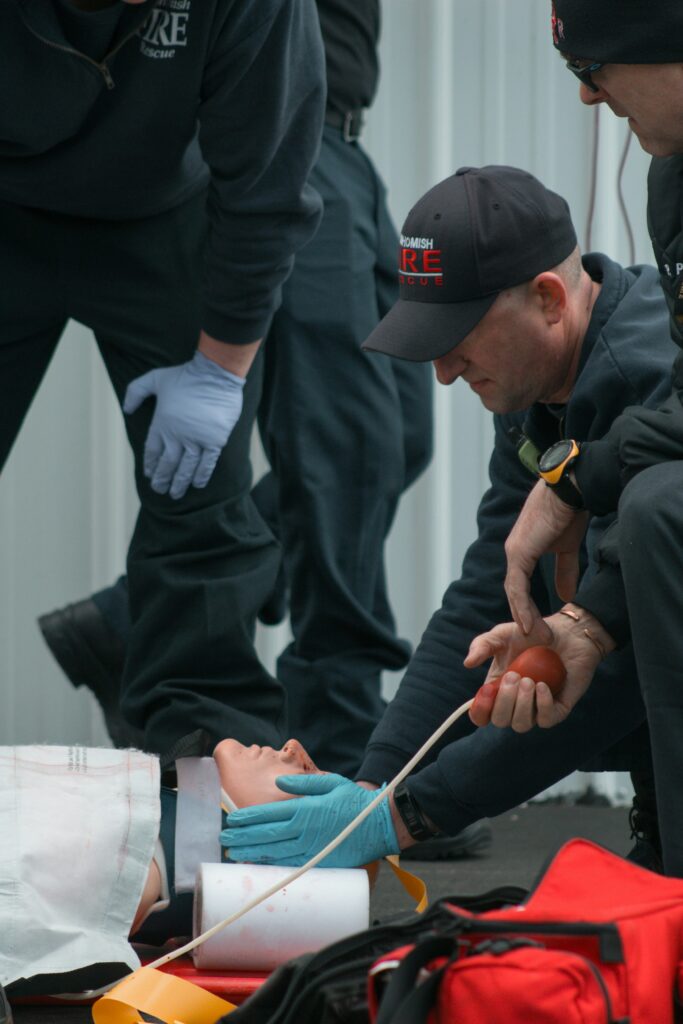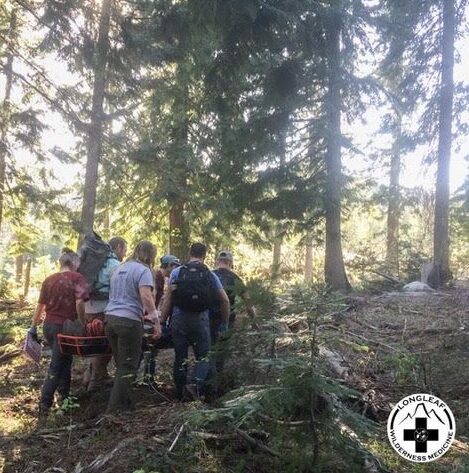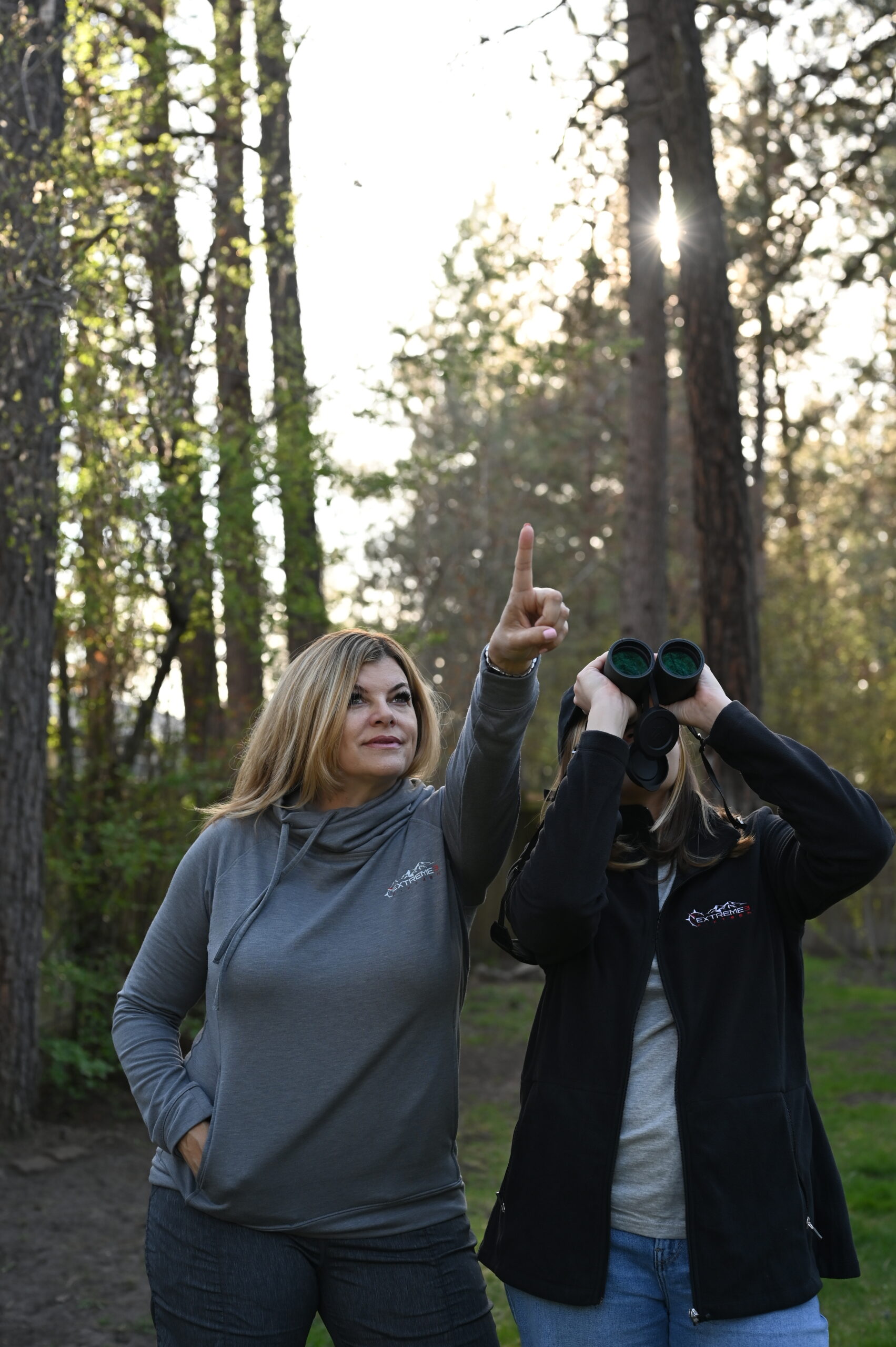Travel tales
Wilderness First Aid Certification Course
Prepare for every Type of Adventure.
A Medical Emergency can occur anywhere and at any time in the great outdoors. A wilderness first aid (WFA) course prepares you to best handle the situation regardless of the emergency situation. It also provides the following:
- Accepted Wilderness First Aid course provider of the Boy Scouts of America;
- Training for workplace first aid training programs, schools, outdoor enthusiasts, etc.
- The confidence to get involved and lend a hand to someone in need.
Imagine driving in the fast lane on the freeway, a motorcycle passes you on the right, splitting lanes between you and the car on your right. Nothing out of the ordinary at this point. Suddenly the motorcycle collides with a car ahead of you on your right. Everyone slams on the brakes, you can see the motorcycle is down, but can’t see the rider because he’s landed one car in front of you in the fast lane. Just as in the movies, time is now moving in slow motion. You open your driver’s door with cars flying past you in the carpool lane. Grab your cell phone and start to run toward the downed cyclist. As you come around the front of your car, you can see that he is conscious, whew, no need for CPR. Other people are out of their cars gathering around, calling 911; however, no one has approached the downed cyclist. You continue to run up to the man laying on the ground while surveying the situation.
Wilderness First Aid Certification Course
Prepare for every Type of Adventure.
A Medical Emergency can occur anywhere and at any time in the great outdoors. A wilderness first aid (WFA) course prepares you to best handle the situation regardless of the emergency situation. It also provides the following:
- Accepted Wilderness First Aid course provider of the Boy Scouts of America;
- Training for workplace first aid training programs, schools, outdoor enthusiasts, etc.
- The confidence to get involved and lend a hand to someone in need.
Imagine driving in the fast lane on the freeway, a motorcycle passes you on the right, splitting lanes between you and the car on your right. Nothing out of the ordinary at this point. Suddenly the motorcycle collides with a car ahead of you on your right. Everyone slams on the brakes, you can see the motorcycle is down, but can’t see the rider because he’s landed one car in front of you in the fast lane. Just as in the movies, time is now moving in slow motion. You open your driver’s door with cars flying past you in the carpool lane. Grab your cell phone and start to run toward the downed cyclist. As you come around the front of your car, you can see that he is conscious, whew, no need for CPR. Other people are out of their cars gathering around, calling 911; however, no one has approached the downed cyclist. You continue to run up to the man laying on the ground while surveying the situation.

Today is the last day of your CPR, First Aid 1 & 2, and Emergency Preparedness class. Who better to offer medical assistance? The right forearm of the man’s leather jacket has disintegrated from his initial contact with the ground. As you have just learned in your class, the body has an amazing coping mechanism for such trauma and has stopped the blood flow to his injury. Searching for something he can use to apply pressure you realize there’s a pile of material by his feet. It’s his sweatpants crumpled up, so you quickly take them off, very careful not to move him and have him apply pressure. Now that you are attending to him, the driver of the car he collided with approaches and tells you that he needs a tourniquet on his injured arm. Being the expert that you are, you now argue with the stranger and explain how it could do more harm than good in this situation. The entire time you are assuring the motorcyclist that he’s going to be okay. Two women are standing back watching and ask you to find out what motorcycle club he belongs to so that they can notify someone of the accident. It’s then you realize that he can’t hear you because of the radio in his helmet. The woman talks you through turning it off, while still on his head. He tells you the name of his club and the women go to work trying to contact someone. You keep talking with the cyclist to make sure he is conscious and stays calm. At last, your knight in shining armor arrives, an off duty fireman, who you gladly let take control of the situation.
Today is the last day of your CPR, First Aid 1 & 2, and Emergency Preparedness class. Who better to offer medical assistance? The right forearm of the man’s leather jacket has disintegrated from his initial contact with the ground. As you have just learned in your class, the body has an amazing coping mechanism for such trauma and has stopped the blood flow to his injury. Searching for something he can use to apply pressure you realize there’s a pile of material by his feet. It’s his sweatpants crumpled up, so you quickly take them off, very careful not to move him and have him apply pressure. Now that you are attending to him, the driver of the car he collided with approaches and tells you that he needs a tourniquet on his injured arm. Being the expert that you are, you now argue with the stranger and explain how it could do more harm than good in this situation. The entire time you are assuring the motorcyclist that he’s going to be okay. Two women are standing back watching and ask you to find out what motorcycle club he belongs to so that they can notify someone of the accident. It’s then you realize that he can’t hear you because of the radio in his helmet. The woman talks you through turning it off, while still on his head. He tells you the name of his club and the women go to work trying to contact someone. You keep talking with the cyclist to make sure he is conscious and stays calm. At last, your knight in shining armor arrives, an off duty fireman, who you gladly let take control of the situation.


By this time you have so much adrenaline running through your body, you can’t stand still. A fire truck arrives and shortly thereafter highway patrol takes over the scene. They have you move your car safely to the side of the road and you are instructed to wait for an officer to take your statement. A calm, friendly patrolman approaches with his notepad and starts to ask what you saw. As you are walking him through everything and explain how you used the man’s sweatpants to apply pressure, the officer stops writing, sets his notepad down on your car and looks directly at you, then he says “so you’re the one who took his pants off” – not exactly what you planned to be known for going forward. Evidently the EMT’s couldn’t figure out how the rider was holding them on his arm.
You proudly attend your last class that evening and the instructor has you tell the story of how you used everything you just learned from your first aid classes. It’s at this point that everyone starts teasing you and the comments of “don’t get a papercut, she will take your pants off“, begin.
I’m grateful to have had this basic first aid training and haven’t had to use it again since this accident, unless you count the time my husband cut his fingertip off fixing dinner while camping. When you have first aid skills and know what to do, when medical emergencies happen you stay calm and handle the situation.
When my husband suggested we needed to take a WFA course, I was all in. The more time you spend in remote environments, or even on country roads in remote areas, the more you realize the need for practical skills. What if this motorcycle accident happened hours away from any help?

By this time you have so much adrenaline running through your body, you can’t stand still. A fire truck arrives and shortly thereafter highway patrol takes over the scene. They have you move your car safely to the side of the road and you are instructed to wait for an officer to take your statement. A calm, friendly patrolman approaches with his notepad and starts to ask what you saw. As you are walking him through everything and explain how you used the man’s sweatpants to apply pressure, the officer stops writing, sets his notepad down on your car and looks directly at you, then he says “so you’re the one who took his pants off” – not exactly what you planned to be known for going forward. Evidently the EMT’s couldn’t figure out how the rider was holding them on his arm.
You proudly attend your last class that evening and the instructor has you tell the story of how you used everything you just learned from your first aid classes. It’s at this point that everyone starts teasing you and the comments of “don’t get a papercut, she will take your pants off“, begin.
I’m grateful to have had this basic first aid training and haven’t had to use it again since this accident, unless you count the time my husband cut his fingertip off fixing dinner while camping. When you have first aid skills and know what to do, when medical emergencies happen you stay calm and handle the situation.
When my husband suggested we needed to take a WFA course, I was all in. The more time you spend in remote environments, or even on country roads in remote areas, the more you realize the need for practical skills. What if this motorcycle accident happened hours away from any help?

About 11,000 injuries related to hiking and backpacking are reported in the US every year.
(Statistics from GITNUX MARKETDATA REPORT 2024)
We found Longleaf Wilderness Medicine and signed up for their 16-hour course. You really don’t know what you don’t know, until you take an in-depth WFA Course. Longleaf offers courses all over the country as well as online classes. Upon successful completion, course participants receive a WFA Certification and Epinephrine Auto Injector Administration. The course also meets American Camp Association (ACA) Standards HW.2.2/ST.3.2 First Aid & Emergency Care Personnel and is an accepted Wilderness First Aid provider of the Boy Scouts of America.
Use code E315 to receive 25% off their online course.

About 11,000 injuries related to hiking and backpacking are reported in the US every year.
(Statistics from GITNUX MARKETDATA REPORT 2024)
We found Longleaf Wilderness Medicine and signed up for their 16-hour course. You really don’t know what you don’t know, until you take an in-depth WFA Course. Longleaf offers courses all over the country as well as online classes. Upon successful completion, course participants receive a WFA Certification and Epinephrine Auto Injector Administration. The course also meets American Camp Association (ACA) Standards HW.2.2/ST.3.2 First Aid & Emergency Care Personnel and is an accepted Wilderness First Aid provider of the Boy Scouts of America.
Use code E315 to receive 25% off their online course.
The Course Run down
We were so impressed with how professionally this course was run and with their respect for students’ time. They cover an immense amount of topics with short breaks throughout the day to stretch your legs. There is a combination of classroom instruction and outdoor setting situational training to practice everything you are learning. You take turns volunteering to be the person injured and the other students don’t know the situation when they find you in distress. The main focus is on learning to go step by step through the patient assessment system for every scenario to identify what has happened and can this person walk out with assistance or do you need to call for help.
Patient Assessment System
S – Scene Size Up
I – Initial Assessment
F – Focused Assessment
T – Treatment
Although each scenario is different based on the environmental concerns, wilderness safety, is the injured person part of your group or a stranger, etc.; by following the SIFT process you are keeping everyone safe.
The most common ailments occurring in people who camp or explore the wilderness, says Dr. Della-Giustina, are gastroenteritis from improperly treated or contaminated water, injuries such as ankle sprains, broken bones, scrapes and lacerations, as well as heat injuries such as heat stroke or heat exhaustion.” (Yale Medicine)
They do a great job of providing hands-on opportunities with splints, wound care and managing spine injuries. In our class I was selected as the person for the wound care training. They made the most realistic cut on my forearm, with fake blood. They walked us through cleaning and bandaging the wound. The video below shows the fake wound, so don’t be grossed out.
In Person 2 Day Course Agenda
DAY 1
Morning
- Introductions
- Patient assessment system
Afternoon
- Brain and spine injuries
- Spinal injury management
- Bone and joint injuries
- Scenario
DAY 2
Morning
- Review of patient assessment system
- Chest injuries
- Respiratory distress
- Shock Wound management
Afternoon
- Allergies and anaphylaxis
- Submersion injuries
- Thermoregulation
- Hypothermia
- Heat injuries
- Lightning Abdominal issues
- Wilderness first aid kits
- Scenario
- Course wrap-up
The Course Run down
We were so impressed with how professionally this course was run and with their respect for students’ time. They cover an immense amount of topics with short breaks throughout the day to stretch your legs. There is a combination of classroom instruction and outdoor setting situational training to practice everything you are learning. You take turns volunteering to be the person injured and the other students don’t know the situation when they find you in distress. The main focus is on learning to go step by step through the patient assessment system for every scenario to identify what has happened and can this person walk out with assistance or do you need to call for help.
Patient Assessment System
- S – Scene Size Up
- I – Initial Assessment
- F – Focused Assessment
- T – Treatment
Although each scenario is different based on the environmental concerns, wilderness safety, is the injured person part of your group or a stranger, etc.; by following the SIFT process you are keeping everyone safe.
The most common ailments occurring in people who camp or explore the wilderness, says Dr. Della-Giustina, are gastroenteritis from improperly treated or contaminated water, injuries such as ankle sprains, broken bones, scrapes and lacerations, as well as heat injuries such as heat stroke or heat exhaustion.” (Yale Medicine)
They do a great job of providing hands-on opportunities with splints, wound care and managing spine injuries. In our class I was selected as the person for the wound care training. They made the most realistic cut on my forearm, with fake blood. They walked us through cleaning and bandaging the wound. The video below shows the fake wound, so don’t be grossed out.
In Person 2 Day Course Work Agenda
In Person 2 Day Course Agenda
DAY 1
Morning
- Introductions
- Patient assessment system
Afternoon
- Brain and spine injuries
- Spinal injury management
- Bone and joint injuries
- Scenario
DAY 2
Morning
- Review of patient assessment system
- Chest injuries
- Respiratory distress
- Shock Wound management
Afternoon
- Allergies and anaphylaxis
- Submersion injuries
- Thermoregulation
- Hypothermia
- Heat injuries
- Lightning Abdominal issues
- Wilderness first aid kits
- Scenario
- Course wrap-up
We cannot recommend Longleaf Wilderness Medicine enough for any WFA course you need. At the end of the course, it is a wonderful feeling to be knowledgeable and able to feel confident in helping a total stranger or your family and friends in the event of medical situations. They also have a small book with instructions on what you just learned that you can carry in your first aid kit.
REcommended Products

Sign Up For Our Newsletter

Join our journey!
Subscribe to our Newsletter!
We spotlight incredible groups offering essential services and training for outdoor aficionados.
Sign up and receive a FREE Extreme3 Fifteen sticker!
